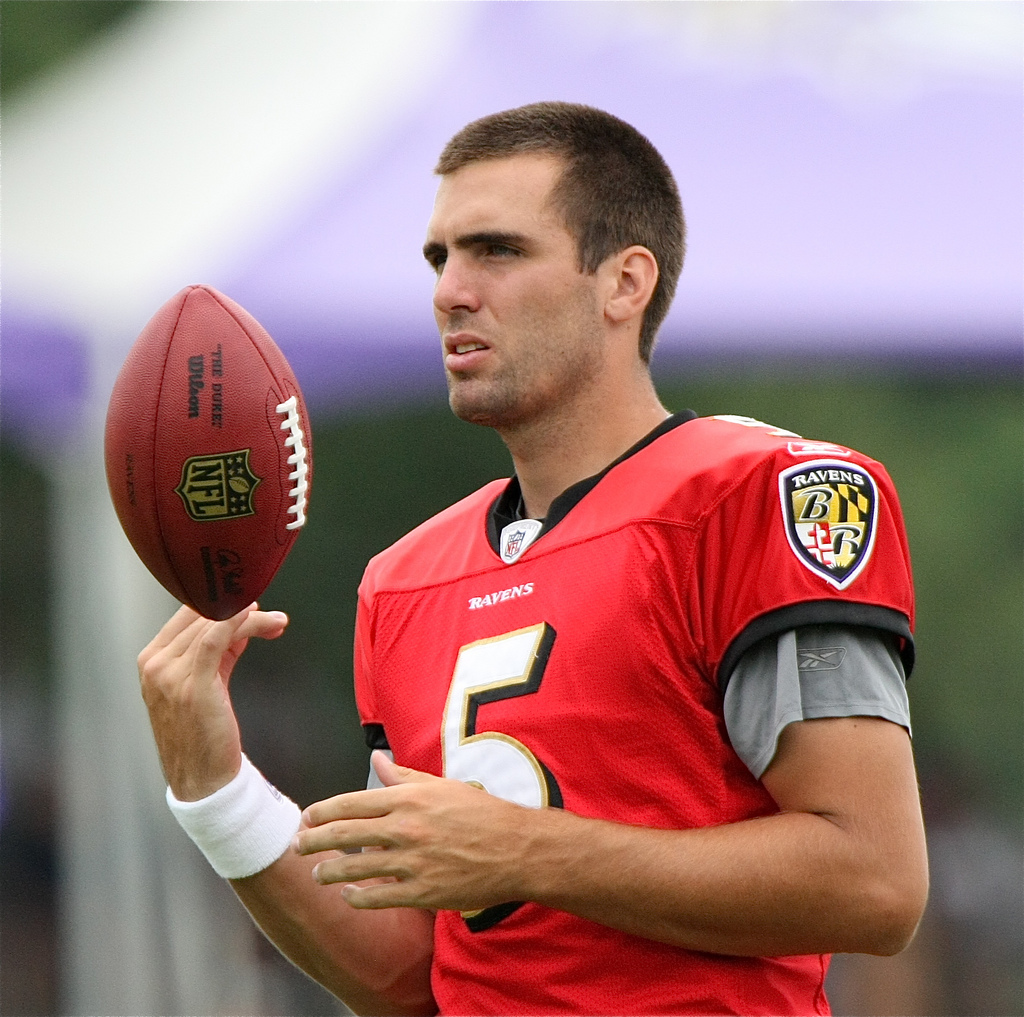Football has a striking resemblance to business sometimes.
Despite moving to Austin, my allegiance to the Baltimore Ravens remains as strong, and maybe stronger, than ever. It’s been an exciting offseason with lots of power moves and now training camp is in full swing.
For third year Quarterback Joe Flacco, this appears to be his coming out year. The Baltimore Sun ran a story about him the other day noting that this offense is now Joe’s offense. He’s taking command. He’s inheriting responsibility. He’s taking ownership.

He’s taking more command and making more adjustments at the line of scrimmage. He’s looking to become more effective in the red zone. And he’s tutoring new backup quarterback Marc Bulger when everyone thought it would be the other way around.
“I want to be able to just run the show and go up and down the field, blow out points on the board and come out successful,” Flacco said after a 75-minute practice featuring rookies and veterans coming off injuries. “That’s what it’s all about.”
That’s the mark of a leader and something that anyone who aspires to leadership is required to do at one point.
Since being in Austin, I’ve been exposed more and more to the startup life – something I used to live in as the Director of Technology at b5media, a company that used to be a blog network but now is something, well, frankly, unidentifiable.
As a result of my new exposure to a startup culture, I’ve already talked to a few companys to get a feel of how they do business. It reminds me of those early days at b5media. Four founders, making decisions by committee, and hoping for the best. Sometimes consensus was a blocker to real innovation.
This mode is common for early companies. Small group. Everyone needs to be on the same page to do anything. And they suffer from paralysis of no decisions. No one is willing to take charge and lead.
At b5media, once we took our first round of VC money, Jeremy Wright, became the CEO. He was forced into a role of trying to get consensus but not suffering from the paralysis of required consensus. Many times, those of us in those leadership roles diverged in opinions and advocated different directions. It was Jeremy’s role to distill this feedback, foster the discussion, and then ultimately take ownership of the situation and make his call.
Sometimes it was the right choice. Sometimes it wasn’t.
Imagine this. It’s a third and long situation. The Ravens offense is backed up on their own 10 yard line due to an unfortunate series of downs involving an incomplete pass and an offensive holding penalty. They are down by 13 points with 6 minutes left in the game. The safe call, and the one called in to Flacco by Cam Cameron on the sideline, would be a slant play down the middle to a slot receiver or tight end.
As the offense lines up, Flacco sees the defense showing blitz and crowding the middle. Understanding from experience that this is a situation fraught with disaster and the need for a big breakout play to energize his offense, he calls an audible. Ray Rice on a draw play – bait the offense to continue to see the pass, but then destroy them with an off tackle run. Rice runs for 24 yards and gets the first down and better field position.
If it wasn’t for the leader having the confidence and insight to see the minefield upon him, he might just go with common wisdom or, more naturally, the wisdom of his advisors. However, he decides that he has the information he needs to make a big play, owns the call and gets a win.
While it’s common for young startups to operate on consensus, sometimes it requires someone with enough balls to make a tough call and own it. A good team will support that and have their leaders back regardless. If they don’t, they shouldn’t be on your team.
Photo credit: Keith Allison

